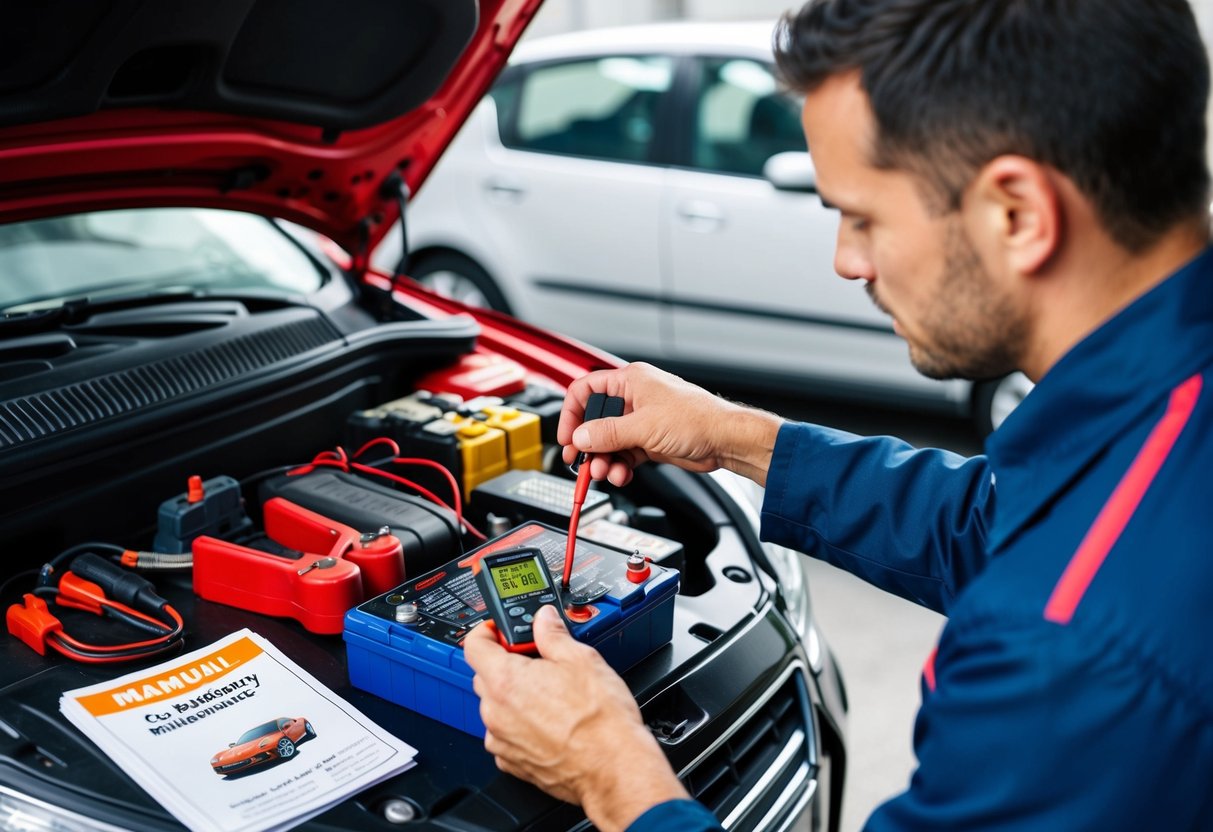
Troubleshooting Common Battery Issues

When maintaining a car battery, it is crucial to be aware of and effectively address several common issues. Proper diagnostics can prevent significant problems and keep your vehicle running smoothly.
Dealing with a Dead Battery
Dead batteries are a frequent problem, often caused by leaving lights or accessories on. This results in a completely drained battery, leaving the car unable to start.
To remedy this, jump-starting the car is usually the first step. Use jumper cables to connect the dead battery to a charged one, following the proper sequence for connection to avoid sparking. After starting the vehicle, allow it to run for at least 20 minutes to recharge the battery.
If the battery frequently dies, it might be time for a replacement. Low battery fluid levels, corrosion on terminals, or an aging battery can all lead to recurrent dead battery issues.
Addressing Slow Engine Crank
A slow engine crank often signals a weak battery. When you turn the key, the engine may struggle to turn over or crank much slower than usual.
First, check the battery terminals for corrosion, which can impede the connection. Cleaning the terminals with a mix of baking soda and water can often restore better contact.
Testing the battery’s voltage with a multimeter can reveal its state. A healthy battery should read around 12.6 volts or higher when fully charged. If the voltage is low, recharging or replacing the battery may be necessary.
Recognizing Electrical System Warnings
Modern vehicles are equipped with electrical systems that alert drivers to potential battery issues. A dashboard warning light often indicates an issue.
When a battery warning light illuminates, it can suggest the alternator is not providing enough charge or that the battery is failing to hold a charge. This calls for checking both the battery and alternator to pinpoint the issue.
Electrical issues like dimming headlights, malfunctioning electric windows, or faulty radio operations can also signal battery troubles. Inspecting the battery and electrical connections can often resolve these problems. If persistent, professional diagnosis might be required to ensure all electrical components function correctly.
Charging Systems and Alternators
Understanding how your car battery is charged and maintained is essential for vehicle reliability. This section covers the function of the alternator, symptoms of alternator failure, and tips on keeping the charging system in top shape.
How the Alternator Charges the Battery
The alternator plays a crucial role in charging the battery while the vehicle is running. It converts mechanical energy from the engine into electrical energy. This electrical energy is then used to recharge the battery and power the car’s electrical systems. An alternator consists of several parts, such as the rotor, stator, and a voltage regulator. As the engine runs, the alternator’s rotor spins, generating an alternating current (AC). This AC is then converted into direct current (DC) by the rectifier, which is suitable for the vehicle’s electrical needs.
Signs of a Faulty Alternator
A faulty alternator can lead to a host of issues. One of the first signs is a warning light on the dashboard, typically in the shape of a battery. Dimming headlights or electrical accessories that work sporadically can also indicate a problem. Strange noises, such as whining or grinding sounds, may suggest that the alternator bearings are wearing out. If the alternator is not functioning correctly, the car may struggle to start or stall during operation. An alternator test can confirm whether this component is at fault.
Maintaining the Charging System
Keeping the charging system in good condition is vital for vehicle performance. Regularly checking the battery terminals for corrosion and ensuring they are tight can prevent charging issues. Inspect the alternator belt for wear and tension; a loose or damaged belt can hinder the alternator’s performance. Regular vehicle inspections should include a check of the alternator and charging system. Cleaning the vents on the alternator can also help maintain its efficiency by preventing overheating. Routine maintenance can significantly extend the life of both the battery and the alternator.